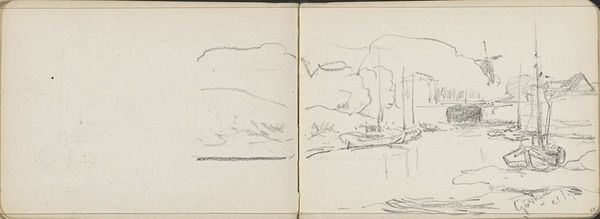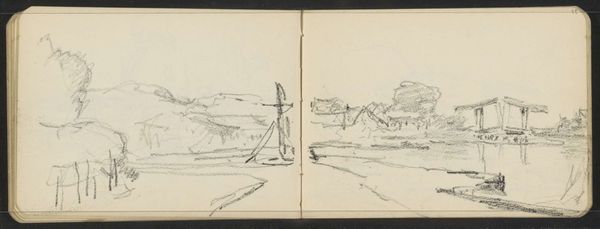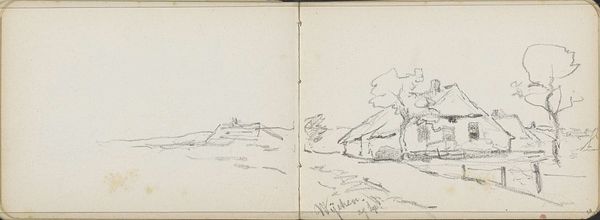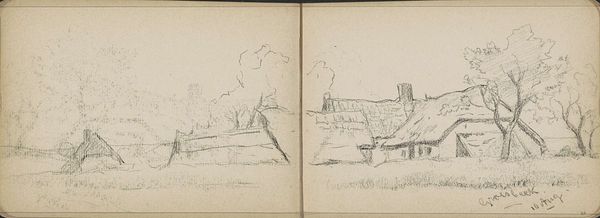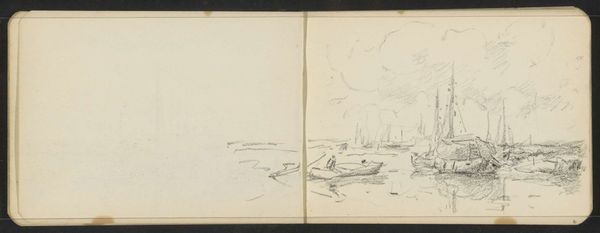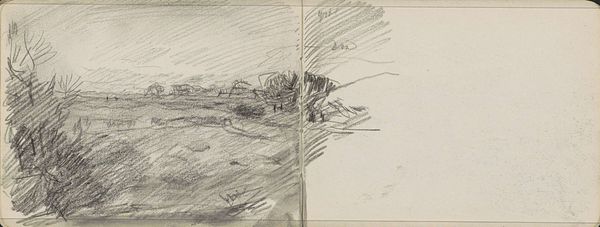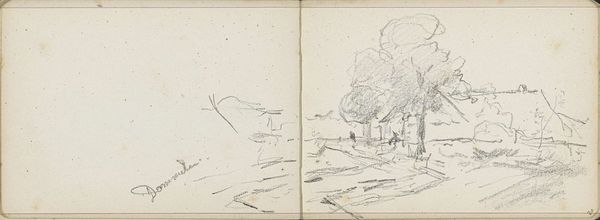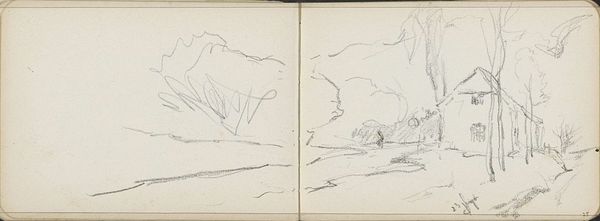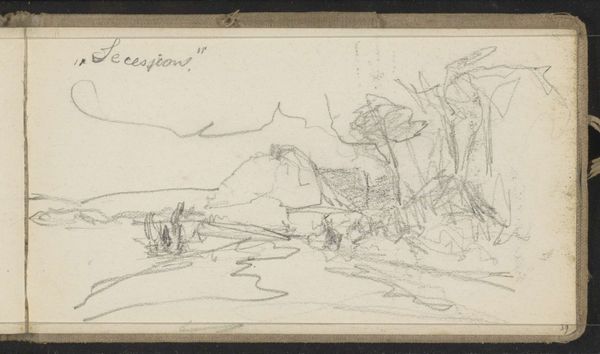
drawing, pencil
#
drawing
#
pen sketch
#
sketch book
#
landscape
#
personal sketchbook
#
sketchwork
#
pen-ink sketch
#
pencil
#
thin linework
#
pen work
#
sketchbook drawing
#
storyboard and sketchbook work
#
sketchbook art
#
realism
Dimensions: height 115 mm, width 160 mm
Copyright: Rijks Museum: Open Domain
Editor: This is Willem Cornelis Rip's "Ophaalbrug te Spaarndam," a pencil and ink drawing from around 1914-1916, captured within a sketchbook. It feels very immediate, almost like a fleeting impression. What stands out to you about its construction? Curator: For me, this drawing opens up questions about artistic labor and the everyday. Rip’s choice of humble materials - pencil and ink within a portable sketchbook - speaks volumes. We often celebrate finished canvases, but what about the value inherent in the process of observing and recording, the artist's manual engagement with their surroundings? Consider the social context: a bridge, a crucial piece of infrastructure, captured not as a grand monument but as a study in line and form. Does the work highlight or undermine the distinction between 'high art' and the more common sketch? Editor: That's interesting, the idea of labor. I hadn't considered the bridge itself as part of the "means of production." It seems more utilitarian. Does its function change our perception of the drawing? Curator: Absolutely. Think about the labour involved in both its creation and depiction. The bridge facilitates the movement of goods and people; it's a nexus of activity. Rip, through his sketch, engages in a different kind of labour: the labour of seeing, selecting, and representing. The simple tools highlight that labor; no fancy oils or canvases here. It emphasizes the artist's direct, unmediated interaction with the subject. Editor: So you're saying that the value is in the recording of the structure, but it also elevates the overlooked utility of everyday life and ordinary architecture. Curator: Precisely! It's a challenge to traditional notions of art and its creation. How does the availability of these accessible materials, like pencil and sketchbook, impact artistic expression and democratize the means of art production? Editor: I never thought about it that way. Seeing it as a material record, instead of just a landscape, makes it much more complex. Thank you for shifting my perspective! Curator: My pleasure. Art history is never just about aesthetics; it's about people, process and materials too!
Comments
No comments
Be the first to comment and join the conversation on the ultimate creative platform.


